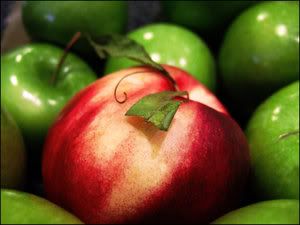History of The Peach
Each morning for breakfast, I enjoy:
- one pear
- one banana
- one apple *(for most of the year - see below)
- all of these cut into bite-size pieces; sprinkled with flax seeds & raw sunflower seeds
I adore my apple-a-day, but from mid-June until right around now (late August), I replace Mr. Apple with the oh-so-lovely *white peach. In California, this is when the white peaches are prime and so very delicious. Since I only have another week or so until I invite the apple back into the fold, I thought I would write a little piece about peaches, before I bid them adieu.

Peaches
Peaches were first seen in China. A favorite fruit of emperors, they are mentioned in Chinese writings as far back as 10th century BC. The English name is derived from the Latin prunus persica (later known as pesca); pêche in French; and eventually called peach in Middle English.
 Peaches were introduced to the early United States colonial settlements in Gulf coastal regions around 1562 by French explorers; and not long after, by the Spaniards who established Saint Augustine, Florida in 1565. Peach trees were planted in many territories by American Indians as they transported the peach seeds to other tribes as they traveled. The crops were hearty and fast-growing. Early settlers in the 1600s, had the illusion that peach trees were native to the United States, since they were so widely spread and grew so vigorously everywhere by that time.
Peaches were introduced to the early United States colonial settlements in Gulf coastal regions around 1562 by French explorers; and not long after, by the Spaniards who established Saint Augustine, Florida in 1565. Peach trees were planted in many territories by American Indians as they transported the peach seeds to other tribes as they traveled. The crops were hearty and fast-growing. Early settlers in the 1600s, had the illusion that peach trees were native to the United States, since they were so widely spread and grew so vigorously everywhere by that time.
President Thomas Jefferson planted peach trees at Monticello as both fruit producers and as non-fruiting, flowering trees. These ornamental trees produce beautiful arrays of pink, red, white and peppermint (a mix red and white petals) flowers. Farmers in the United States began producing peaches commercially in the 19th century in Georgia, Delaware, Maryland and Virginia. Today, California grows 65% of commercial peach production in the United States. Colorado, Michigan, and Washington also grow a significant amount. Italy, China, India and Greece are major producers of peaches outside of the United States.
Peaches are extremely rich in vitamin A, a good source of vitamin B3, potassium and vitamin C. Like many fruits, peaches are known as a negative calorie food, which are foods that contain less calories that it takes to digest them. For instance, if a peach contains 60 calories, but it takes your body 75 calories to digest it; it is a negative calorie selection.
But I don't eat them for this reason. I eat them during the summer months when they are prime and beautiful because they are delicious - plain and simple. I will miss you in my breakfast bowl fair peach. See you next June.
 Thursday, September 24, 2009 at 9:18AM | |
Thursday, September 24, 2009 at 9:18AM | |  Email Article
Email Article 



Reader Comments (3)
Ooh, I love me some peaches!!! Not sure if I have ever had a white peach though. I just grab and go at the store, never looking at the signs. Thanks for the history of the peach, Jinxi!
And I will say this, so no one else has to embarrass themselves.....
Peachy!!! ;-)
love love love peaches! i'm gonna be sad to see them go too. i eat em up all summer from the farmers market, de-lish!
I have eaten three peaches already today. They were big half pound ones, the size of a softball. They were so tasty. See you in a few hours. Love ya.